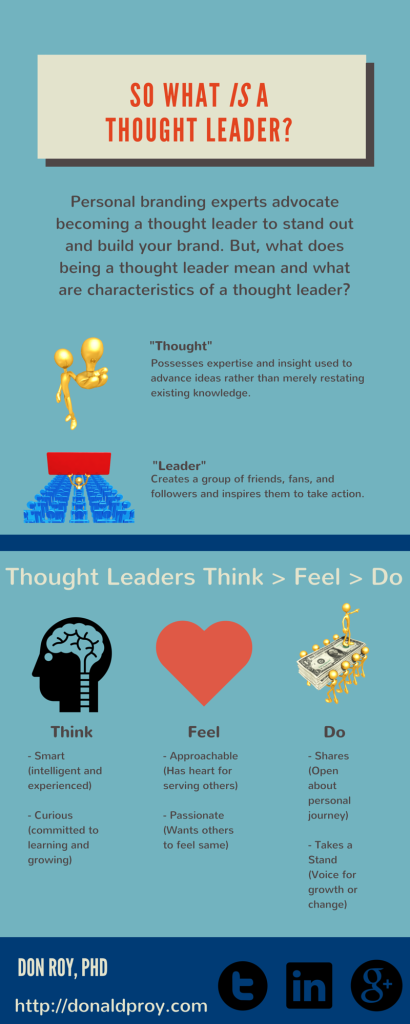“Become a thought leader.”
“Strive to achieve thought leadership.”
“Build your personal brand by being a thought leader.”
Most personal branding experts are apt to dispense advice like the above statements to people who want to position themselves as a useful resource who adds value to others. Thought leadership is a means to that end. Identifying thought leaders in a field is not too difficult. When I think of marketing thought leaders, names like Seth Godin, Chris Brogan, and Mark Schaefer come to mind. More difficult tasks are grasping what it means to be a thought leader and determining what it takes to arrive at that destination.
The meaning of thought leadership is laid out in the infographic below.
“Think” and “Lead”
One of the most striking notions of what it means to be a thought leader is that being smart or an expert in your space is not enough. While thought leaders certainly can be characterized as intelligent, what sets them apart is their courage to take a stand or even take action for principles about which they feel strongly and are unwavering. Moreover, a thought leader exhibits leadership by being able to rally a group of people (i.e., their tribe) to affect change among them. An example of this distinctive characteristic of a thought leader is career expert, author, and speaker Dan Miller. His 48 Days community numbers more than 15,000 people who look to Dan for guidance and help each other as they look for career fulfillment.
Follow the Leaders
You may be on a personal journey to become a thought leader in your field. Keep in mind the characteristics of a thought leader given in the infographic as you work to carve out a distinctive position. Use this information to assist you in finding thought leaders you should follow, learn from, and rally around. I cannot think of a single thought leader who woke up one day with a Thought Leader badge pinned to his or her chest. The status is earned through years of work (often in obscurity), clarifying your values and core principles with a willingness to act on them. In the meantime, enjoy the journey.

